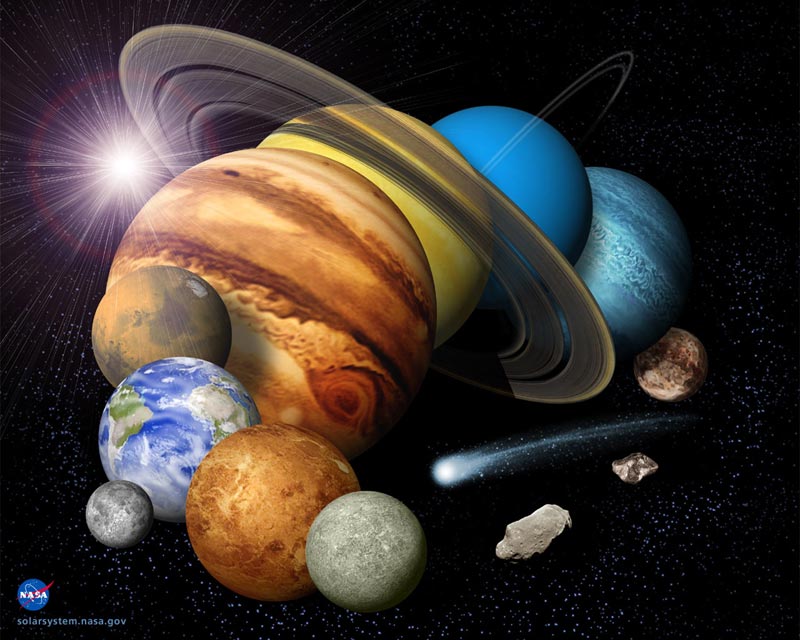And then there were four. An astronomer at the Southwest Research Institute in Boulder thinks our solar system might once have had five gas giant planets – instead of the four we know today.
After running a series of 6,000 simulations of our solar system’s birth and early formation, David Nesvorny believes that a Neptune-sized planet likely got the boot from the solar system some 3.9 billion years ago.

Jupiter, Saturn, Uranus and Neptune are the four gas giant planets in our sun’s family today. Like Earth, these planets are thought by astronomers to have arisen from a vast cloud of gas and dust that surrounded our sun some 4.6 billion years ago.
Reporting in arXiv, September 13, 2011, David Nesvorny says that a solar system starting with five giant planets was 10 times more likely to lead to today’s configuration of planets, rather than one with just four. He points out that, as astronomers find an increasing number of distant solar systems, they are beginning to realize that the configuration of planets in our solar system is a bit unusual. He wrote:

The solar system, with the widely spaced and nearly circular orbits of the giant planets, bears little resemblance to the bulk of known exoplanets.
In the most successful of Nesvorny’s simulations, the four giant plants start tightly packed with a fifth ice giant planet – a world much like what’s now considered our solar system’s outermost planet, Neptune – orbiting about 15 times Earth’s distance from the sun. At a critical juncture, a close encounter with Jupiter – our solar system’s most massive planet – sends the ice giant on a trajectory completely out the solar system through gravitational interaction. Nesvorny writes:
This possibility appears to be conceivable in view of the recent discovery of a large number of free-floating planets in interstellar space, which indicates that planet ejection should be common.
Will we ever know for sure? No. But the idea of a fifth gas giant planet in our solar system – an ice giant 15 times Earth’s distance from the sun – is fascinating to contemplate, and seems reasonable in light of our growing knowledge about distant solar systems and solitary planets in interstellar space.
Bottom line: After running a series of 6,000 simulations of our solar system’s birth and early formation, David Nesvorny at the Southwest Research Institute in Boulder thinks our solar system might once have had five gas giant planets – instead of the four we know today. He says a Neptune-sized planet likely got the boot from the solar system after a close encounter with Jupiter, some 3.9 billion years ago. Nesvorny reported his findings September 13, 2011, in arXiv.
Via Cornell University Library arXiv











